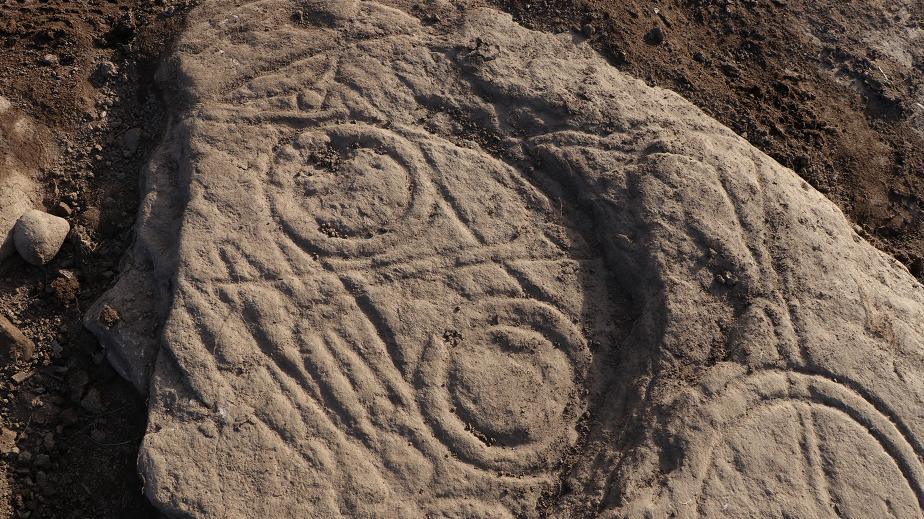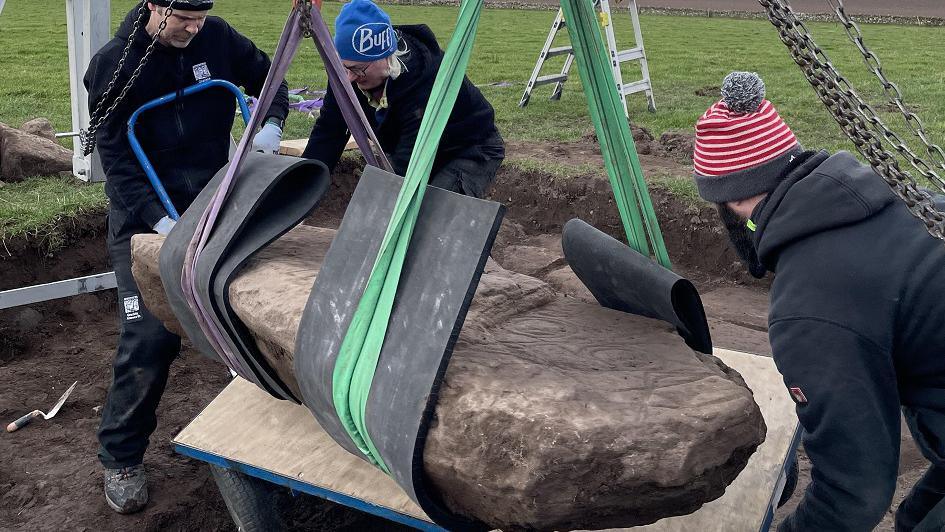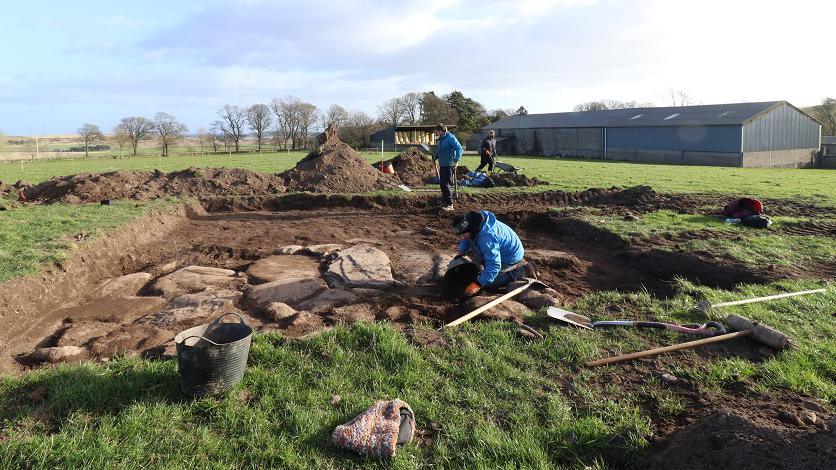Rare Pictish stone unearthed near Angus
At a glance
A rare carved Pictish stone has been unearthed in Angus.
The discovery was made in early 2020 but the Covid pandemic delayed its excavation until now.
The 1.7m long stone was found in an area rich in Pictish finds.
Archaeologists believe it dates from the 5th or 6th Centuries.
- Published
Archaeologists have unearthed a rare Pictish stone in Angus.
The 1.7m (5.5ft) long carved monument is one of only about 200 to be found.
The discovery was made by a team from the University of Aberdeen during survey work at Aberlemno, where important Pictish finds have been made previously.
The site is near a suspected location of the Battle of Dun Nechtain, also known as the Battle of Nechtansmere. Fought in 685 AD, it saw Picts defeat an army of Northumbrian Angles.
The stone is thought to date from the 5th or 6th Centuries.
Archaeologists carrying out a geophysical survey of a field spotted anomalies below ground which looked like evidence of a settlement.
They dug a test pit and came across the carved stone.
The discovery was made in early 2020, but the Covid pandemic delayed the recovery of the stone until now.
It is to be carefully examined and the settlement where it was found is to be further excavated.
'Absolutely remarkable'
Prof Gordon Noble, who is leading the archaeology project, said: “To come across something like this while digging one small test pit is absolutely remarkable and none of us could quite believe our luck.
“The benefits of making a find in this way are that we can do much more detailed work in regard to the context. We can examine and date the layers underneath it and extract much more detailed information without losing vital evidence.”
Research fellow Dr James O’Driscoll, who initially discovered the stone, said: “It’s a feeling that I’ll probably never have again on an archaeological site. It’s a find of that scale.”
The Picts lived in north and north east Scotland, including what are the Highlands and Aberdeenshire today, before the kingdoms of Alba and Scotland.
- Image source, University of Aberdeen

Image caption, A Pictish carved stone discovered by archaeologists in early 2020 has been excavated after delays caused by the Covid pandemic.
1 of 3

